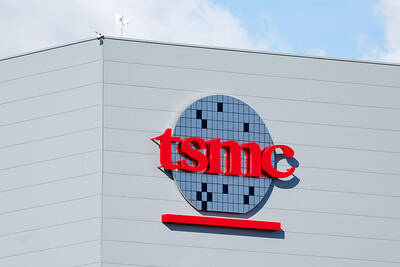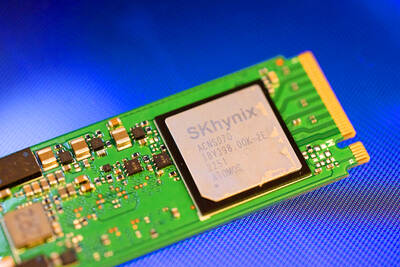Chinese smartphone company Realme Mobile Telecommunications (Shenzhen) Co (銳爾覓移動通信) adopted MediaTek Inc’s (聯發科) 5G chips for its new smartphones launched in Taiwan yesterday in a joint effort to expand their share of the 5G smartphone market.
Realme’s new flagship model, the Realme X7 Pro, is equipped with MediaTek’s 5G system-on-a-chip (SoC) Dimensity 1000+, the latest premium SoC from the Taiwanese chip designer.
The Dimensity 1000+ is also used in Xiaomi Corp’s (小米) Remi K30 Ultra and Vivo Communication Technology Co’s (維沃) IQOO Z1 in China, as MediaTek aims to grab a 50 percent share of China’s 5G smartphone chip market.

Photo courtesy of Realme Taiwan
Realme’s new mid-range Realme 7 is powered by Dimensity 800U, bringing its retail price to NT$9,990, the first 5G phone with a price tag below NT$10,000, the company said.
“With the offering of those two 5G phones, we will have 40 or 50 percent of our products supporting 5G in the first quarter next year,” Realme Taiwan chief commercial officer Ivan Chung (鍾湘偉) told a media briefing in Taipei.
Next year, all new smartphones will be 5G models, Chung said.
The company plans to open two or three new outlets to increase its market presence in Taiwan, he said.
Realme entered the Taiwanese market in May last year and its ranking climbed into the top five last quarter, from No. 9 in November last year, he said.
Realme, a sub-brand of Oppo Mobile Telecommunications Corp (歐珀), Xiaomi Corp and Vivo are expected to benefit from US sanctions on Huawei Technologies Co (華為).
Oppo, including Realme, is the world’s second-biggest mobile phone brand, with a market share of 13.4 percent worldwide, TrendForce Corp (集邦科技) statistics show.

Taiwan Semiconductor Manufacturing Co (TSMC, 台積電) secured a record 70.2 percent share of the global foundry business in the second quarter, up from 67.6 percent the previous quarter, and continued widening its lead over second-placed Samsung Electronics Co, TrendForce Corp (集邦科技) said on Monday. TSMC posted US$30.24 billion in sales in the April-to-June period, up 18.5 percent from the previous quarter, driven by major smartphone customers entering their ramp-up cycle and robust demand for artificial intelligence chips, laptops and PCs, which boosted wafer shipments and average selling prices, TrendForce said in a report. Samsung’s sales also grew in the second quarter, up

LIMITED IMPACT: Investor confidence was likely sustained by its relatively small exposure to the Chinese market, as only less advanced chips are made in Nanjing Taiwan Semiconductor Manufacturing Co (TSMC, 台積電) saw its stock price close steady yesterday in a sign that the loss of the validated end user (VEU) status for its Nanjing, China, fab should have a mild impact on the world’s biggest contract chipmaker financially and technologically. Media reports about the waiver loss sent TSMC down 1.29 percent during the early trading session yesterday, but the stock soon regained strength and ended at NT$1,160, unchanged from Tuesday. Investors’ confidence in TSMC was likely built on its relatively small exposure to the Chinese market, as Chinese customers contributed about 9 percent to TSMC’s revenue last

LOOPHOLES: The move is to end a break that was aiding foreign producers without any similar benefit for US manufacturers, the US Department of Commerce said US President Donald Trump’s administration would make it harder for Samsung Electronics Co and SK Hynix Inc to ship critical equipment to their chipmaking operations in China, dealing a potential blow to the companies’ production in the world’s largest semiconductor market. The US Department of Commerce in a notice published on Friday said that it was revoking waivers for Samsung and SK Hynix to use US technologies in their Chinese operations. The companies had been operating in China under regulations that allow them to import chipmaking equipment without applying for a new license each time. The move would revise what is known

UNCERTAINTY: A final ruling against the president’s tariffs would upend his trade deals and force the government to content with billions of dollars in refunds The legal fight over US President Donald Trump’s global tariffs is deepening after a federal appeals court ruled the levies were issued illegally under an emergency law, extending the chaos in global trade. A 7-4 decision by a panel of judges on Friday was a major setback for Trump, even as it gives both sides something to boast about. The majority upheld a May ruling by the Court of International Trade that the tariffs were illegal. However, the judges left the levies intact while the case proceeds, as Trump had requested, and suggested that any injunction could potentially be narrowed to apply